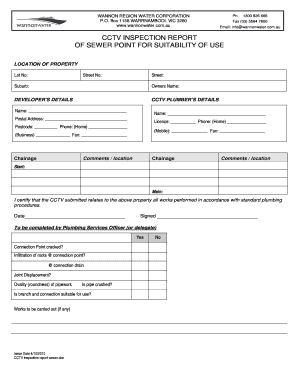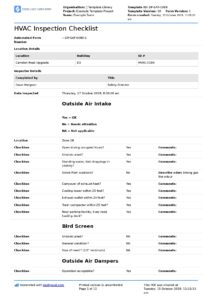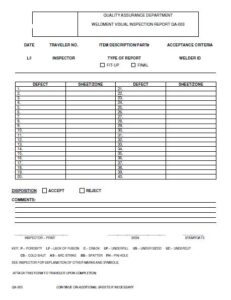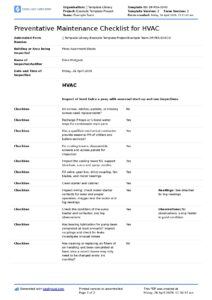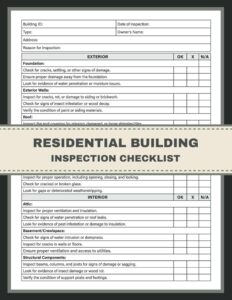In today’s security-conscious world, closed-circuit television, or CCTV systems, are more than just deterrents; they are essential eyes that protect our homes, businesses, and public spaces. These intricate networks of cameras and recording devices work tirelessly, but like any sophisticated technology, they require consistent attention to ensure optimal performance.
Regular inspections are the backbone of a reliable CCTV system. They help identify potential issues before they escalate into major problems, ensuring continuous coverage and the integrity of your security infrastructure. From checking lens clarity to verifying network connectivity, each component plays a vital role in capturing crucial footage when it matters most.
But how do you keep track of these detailed checks, findings, and necessary actions? This is precisely where a well-structured and comprehensive CCTV camera inspection report template becomes indispensable. It’s not just a formality; it’s a critical tool for maintaining vigilance and ensuring your security investment delivers on its promise.
Dissecting the Anatomy of an Effective CCTV Camera Inspection Report Template
When you’re dealing with the intricate details of security systems, consistency and thoroughness are paramount. A robust CCTV camera inspection report template acts as your guide, ensuring no critical aspect is overlooked during routine maintenance or troubleshooting. It transforms a potentially haphazard check into a systematic evaluation, offering a clear snapshot of your system’s health at any given moment.
The best templates begin with foundational information. This typically includes the date of the inspection, the name of the inspector, the client or site location, and a unique system ID. These details are crucial for historical tracking and quickly identifying which system is being assessed, especially for organizations managing multiple surveillance networks. Think of it as the header that gives context to everything that follows.
Moving beyond the basics, a comprehensive template dives into general system health. Are all cameras operational? Is the video feed clear and free from interference? What about the power supply stability? These initial checks provide an overall sense of the system’s performance before drilling down into specific components. It helps flag major issues right from the start.
Detailed Component Analysis and Actionable Findings
This is where the real depth of an inspection comes into play. Each camera within the system needs individual attention. The template should prompt the inspector to assess lens clarity, ensuring there are no obstructions, dirt, or condensation affecting the view. Focus and field of vision are also vital; are they optimized for the intended coverage area? Furthermore, checking the physical housing for damage, corrosion, or tampering, and verifying the functionality of infrared (IR) illuminators for night vision, are indispensable steps.
Beyond the cameras themselves, the core recording and networking components demand scrutiny. The digital video recorder (DVR) or network video recorder (NVR) needs to be checked for proper recording, sufficient storage capacity, and appropriate retention settings. Network connectivity, including cabling and Wi-Fi signal strength if applicable, must be confirmed to ensure seamless data transmission. Power sources and backup battery systems also require verification to guarantee continuous operation even during outages.
The ultimate value of any inspection lies in the actionable insights it provides. A good template dedicates a significant section to findings and recommendations. This isn’t just about noting what’s wrong, but also about proposing solutions. This might involve listing defective parts, suggesting cleaning routines, recommending firmware updates, or detailing specific repairs. It’s the bridge between identification and resolution.
- Camera ID and Location
- Lens Condition (Cleanliness, Focus)
- Field of View (Correct, Obstructions)
- Physical Housing (Damage, Tampering)
- IR Illuminator Functionality
- Video Feed Quality (Clarity, Interference)
- DVR/NVR Recording Status
- Storage Capacity and Retention Settings
- Network Connectivity (Wired/Wireless)
- Power Supply and Backup System Health
- Date and Time Accuracy
- Any noted anomalies or potential security risks
The Tangible Benefits of a Standardized Inspection Process
Adopting a standardized CCTV camera inspection report template goes far beyond mere documentation; it injects efficiency, consistency, and accountability into your security maintenance protocols. Imagine a team of technicians, all following the exact same checklist, ensuring that every critical point is assessed with the same rigor. This standardization dramatically reduces the chances of human error and overlooked details, leading to more reliable and predictable inspection outcomes.
Consistency in reporting also fosters better compliance. For businesses and institutions, adhering to regulatory standards or internal security policies is non-negotiable. A detailed, templated report provides irrefutable evidence that necessary checks have been performed, and any identified issues are being addressed systematically. This level of documentation is invaluable during audits or in the unfortunate event that footage is needed for legal or investigative purposes.
Ultimately, a structured inspection process empowers informed decision-making. Over time, these reports build a historical record of your system’s performance, highlighting recurring issues or components that frequently fail. This data is precious for predictive maintenance, budgeting for upgrades, and understanding the true lifespan of your equipment. It transforms reactive repairs into proactive system management, saving both time and resources in the long run.
- Ensures comprehensive system checks every time
- Streamlines the inspection process, saving time
- Provides clear, consistent documentation for compliance
- Facilitates quick identification of issues and resolutions
- Supports proactive maintenance and budget planning
- Extends the operational lifespan of CCTV equipment
- Enhances overall system reliability and security
Investing in a robust CCTV system is a significant step towards enhanced security, but its effectiveness hinges on diligent upkeep. A thorough inspection routine, underpinned by a comprehensive reporting structure, ensures that your security eyes remain sharp and responsive, ready to capture every critical moment.
By embracing a systematic approach to inspection and leveraging detailed reports, you’re not just maintaining equipment; you’re fortifying your entire security posture, guaranteeing peace of mind, and ensuring that your protective measures are always at their peak performance.
